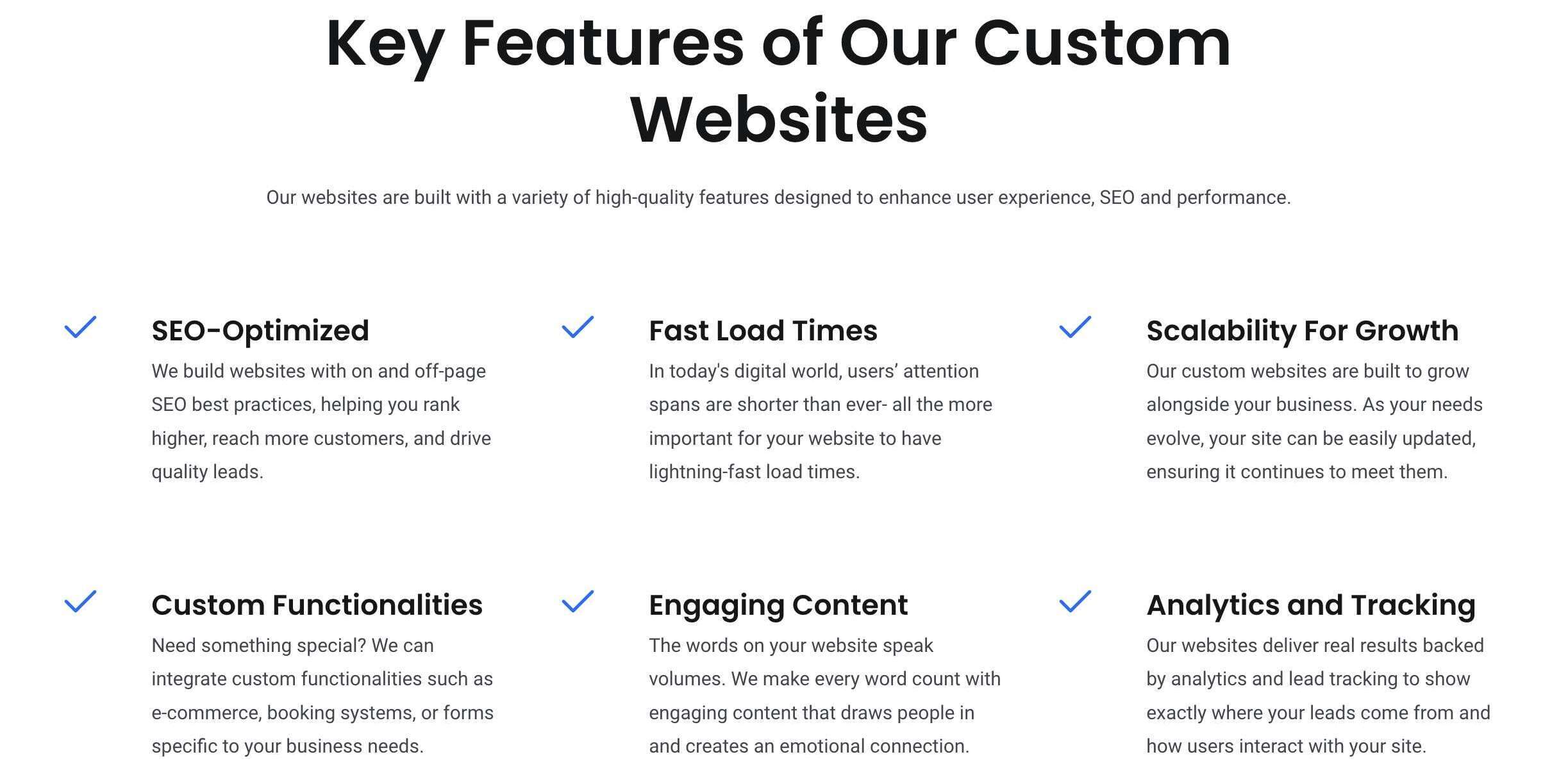Writing comes in countless forms: books, essays, email blasts, blog posts, short stories, ad copy—the list goes on. But what about writing for search engines? This requires a distinct set of skills, complete with its own nuances and, at times, approaches that might feel unsavory to a novelist or academic writer of serious pedigree. So, whether you’re an experienced writer wondering how to optimize your content for search engines or a business owner looking to enhance your website copy, you may be seeking guidance on how to create text that not only engages readers but also ranks well.
We’re here to help! In this blog post, we’ll explore essential tips for crafting SEO-friendly content. From effectively incorporating keywords and strong calls to action to using the right headers, let’s dive into some best practices that can elevate your writing and boost your visibility online.
.

1. Ensure Readability and Scanability
The first rule of thumb is to focus on creating content that is highly readable and scannable. To put it simply, this means don’t write an essay!
Write in short paragraphs to break up the text, making it less intimidating for readers. Use subheadings and bold text to highlight key points; this makes it easier for readers to find the information they’re looking for. Also, Incorporate bullet points and numbered lists to present information that is easier for readers to scan rather than a long paragraph.
Scannability is essential for online content, as many users skim articles rather than reading them word for word. Also, long paragraphs just don’t look as visually appealing on websites, and there is less design flexibility.
Remember, readability and scannability aren’t just for your audience—they also matter to search engines. Search engines prioritize content that is easy to read and understand, so by focusing on these aspects, you improve your chances of ranking higher on SERPs.

2. Use Headings and Subheadings
Not only do headings and subheadings play a crucial role in enhancing its readability and scannability talked about above.
But they are also extremely important for organizing the content on your page and for SEO. They provide a clear structure for your article, guiding readers through the main points and ideas. For instance if you are writing a blog post, your headers will delineate the different sections of the posts like for example the introduction, key points, conclusion, ect. Headers also just make the page flow better.
Incorporating headings and subheadings not only improves user experience but also boosts your SEO efforts. By using descriptive and keyword-rich headings, you help search engines understand the context and relevance of your content. You can also incorporate keywords into your headers to enhance visibility in search results. This strategy allows you to target specific queries and increases the likelihood of your page garnering organic traffic.

3. Keyword Optimization
Keyword optimization is one of the most important pillars of SEO copywriting. It involves identifying keywords and queries that people are searching for and incorporating them naturally into your content to improve your chances of ranking higher on search engine results pages.
For example, let’s say you are a therapist building a website. On your homepage you put one of your favorite quotes as the top headers “sometimes the bravest thing you can do is ask for help”. While it may be inspiring, it has nothing to do with your business name, industry, or services you provide. Not only are people not searching that quote when looking for a therapist but it doesn’t tell search engines about who you are and what you do in order to rank the page.
So if you were to optimize that header instead of using the quote, you could use a header like “Compassionate Therapy Services for Mental Health Support.” This way, you incorporate relevant keywords like “therapy,” “mental health,” and “therapy services.” You can also include geolocation terms to further enhance your optimization. For example, if you’re located in a specific city or region, you might use a header like “Compassionate Therapist in [City Name].
By using relevant keywords and descriptors, search engines can better understand who you are, what you do, and the services you offer. This clarity increases your chances of ranking for valuable keywords that potential clients are actively searching for.

4. Write For Real People
While optimizing your content for search engines is essential, it’s equally important to write for people. Creating engaging and informative content that resonates with your audience should be a top priority. No one is going to want to read a bunch of non-descript generic content stuffed with keywords. It is not valuable or engaging and does pretty much nothing to build trust between you and your readers or for the reader to get to know your business on a personal level.
To write for humans, avoid using a super generic tone of voice. Instead try and figure out what the tone of your brand is and how you want to come off to readers. Also avoid producing heavily automated AI content and just slapping it on your website. It likely checks all the boxes above of being generic, impersonal and providing little value to readers.
Try and devote time and energy to producing content you are proud of and feel like aligns with your brand image (tone of voice, values ect). Incorporate storytelling and anecdotes to make your content more engaging and memorable.
Remember, search engines reward human-first content, so it can actually improve your chances of ranking higher on SERPs.
Google’s August 2024 core update focuses on “promoting content that users find genuinely helpful and informative. This update penalizes material created primarily for the purpose of achieving high search rankings rather than providing real value to users.”

5. Calls to Action and Interlinking
Call to action (CTAs) and interlinking are essential components of SEO-friendly content. CTAs guide readers toward taking specific actions, such as booking an estimate, contacting the business, or making a purchase. By incorporating clear and compelling CTAs into your content, you can drive conversions and achieve their marketing goals.
Interlinking involves linking to other relevant pages on your website, helping readers explore more of your content, and improving your site’s overall SEO. By strategically placing internal links throughout your content, you guide users through your website, increasing engagement and reducing bounce rates.
Go Forth and Write SEO Copy!
Creating high-quality, SEO-friendly content is crucial if you want your website pages to rank in search engines and drive organic traffic to your website.
To achieve this, focus on key elements we discussed in this blog, like readability, scannability, keyword optimization, and user engagement. And remember to craft content that appeals to both search engines and readers to build trust and credibility with your audience. This balanced approach helps you achieve your SEO goals while fostering a positive user experience.
For small businesses seeking to enhance their SEO efforts, partnering with a trusted SEO agency like Integrity Marketing can provide valuable support and expertise. By working with professionals who understand the nuances of SEO, copywriting, and web design, you can achieve your business goals and thrive in an increasingly competitive marketplace.
About the author
April Young
April is our Project and Content Manager, known for her strong communication skills. With years of experience in SEO, copywriting, project planning, and contract management, she excels in creating compelling website content and leading a dynamic team of copywriters, web designers, and contractors.





